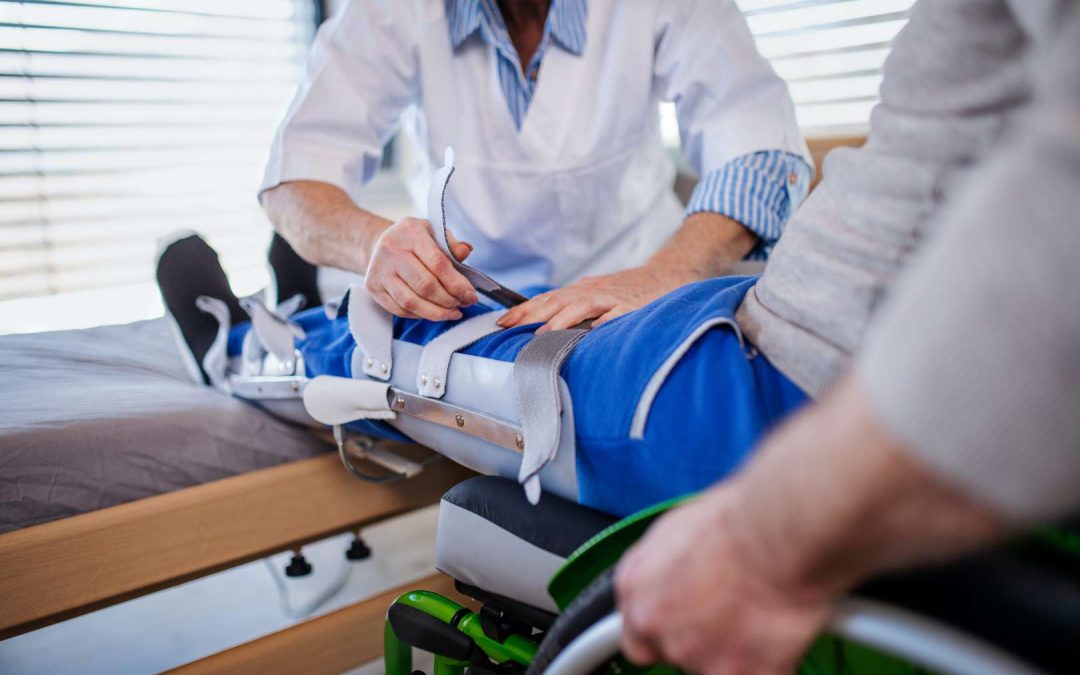Understanding the Risks: Why Fall Prevention Matters
Falls are a leading cause of injury among seniors, often leading to serious health complications. As people age, their balance, strength, and coordination tend to decline, making them more susceptible to falls. Recognizing the risks and implementing preventive measures is crucial to maintaining the well-being and independence of older adults.
By focusing on fall prevention, caregivers and family members can create a safer environment for seniors. This proactive approach not only reduces the risk of injury but also helps maintain the quality of life. Therefore, understanding the causes of falls and taking steps to mitigate them is essential in senior care.
Home Modifications: Creating a Safe Living Space
One of the most effective ways to prevent falls is by modifying the home environment. Simple changes can make a significant difference in reducing fall risks. For example, removing tripping hazards like loose rugs and clutter from walkways can help prevent accidents. Additionally, installing grab bars in key areas such as bathrooms and staircases provides extra support.
Lighting also plays a critical role in fall prevention. Ensuring that all areas of the home are well-lit, particularly staircases and hallways, can help seniors navigate their surroundings more safely. Nightlights in bedrooms and bathrooms can further assist in reducing the risk of nighttime falls.
Encouraging Physical Activity: Strength and Balance Exercises
Regular physical activity is essential for maintaining muscle strength, flexibility, and balance, all of which contribute to fall prevention. Seniors should be encouraged to participate in exercises that focus on improving their stability. Activities such as tai chi, yoga, and strength training can be particularly beneficial.
It’s important to tailor exercise programs to individual capabilities and consult with a healthcare provider before starting any new regimen. By incorporating physical activity into daily routines, seniors can build the strength and confidence needed to move safely and reduce their risk of falls.
Proper Footwear: The Importance of Supportive Shoes
Footwear plays a crucial role in preventing falls among seniors. Shoes that fit well and offer good support can significantly reduce the risk of slipping or tripping. Seniors should avoid wearing slippers, flip-flops, or any footwear with slick soles, as these can increase the likelihood of falls.
Instead, opt for shoes with non-slip soles, a snug fit, and adequate cushioning. For those with specific foot conditions, orthopedic shoes or custom insoles may be necessary to provide additional support. Regularly checking and replacing worn-out shoes is also important in maintaining safety.
Medication Management: Being Aware of Side Effects
Many seniors take multiple medications, some of which can have side effects that increase the risk of falls. For instance, certain medications may cause dizziness, drowsiness, or lower blood pressure, all of which can contribute to a loss of balance. It’s essential to review all medications with a healthcare provider to identify potential risks.
Adjusting dosages or switching to alternative medications may help reduce side effects that could lead to falls. Additionally, caregivers should monitor seniors for any changes in their behavior or coordination after starting a new medication, ensuring that any issues are promptly addressed.
Regular Health Check-Ups: Monitoring Vision and Hearing
Regular health check-ups are vital for identifying and addressing conditions that may contribute to falls. Vision and hearing impairments, for example, can significantly affect a senior’s ability to navigate their environment safely. Annual eye exams and hearing tests can help detect problems early and allow for appropriate interventions.
Corrective lenses, hearing aids, or other assistive devices can greatly improve a senior’s awareness of their surroundings, reducing the likelihood of falls. Moreover, regular health check-ups provide an opportunity to assess overall mobility and address any other medical conditions that might impact balance and coordination.
Building a Support System: The Role of Caregivers and Family
Finally, a strong support system is crucial in ensuring the safety and well-being of seniors. Caregivers and family members should work together to create and maintain a safe environment, regularly checking for hazards and making necessary adjustments. Open communication about the challenges seniors face can also help in identifying areas where additional support is needed.
Providing emotional support is equally important. Encouraging independence while being available to assist when needed helps seniors feel more confident in their daily activities. With the right combination of physical safety measures and emotional support, seniors can enjoy a higher quality of life while minimizing the risk of falls.
Conclusion: Prioritizing Safety in Senior Care
Fall prevention is a critical aspect of senior care that requires a multifaceted approach. By understanding the risks, making necessary home modifications, encouraging physical activity, managing medications, and building a strong support system, caregivers can create a safer environment for seniors. Prioritizing these strategies not only helps prevent falls but also promotes overall health and independence, ensuring that seniors can enjoy their golden years with confidence and peace of mind.



Recent Comments